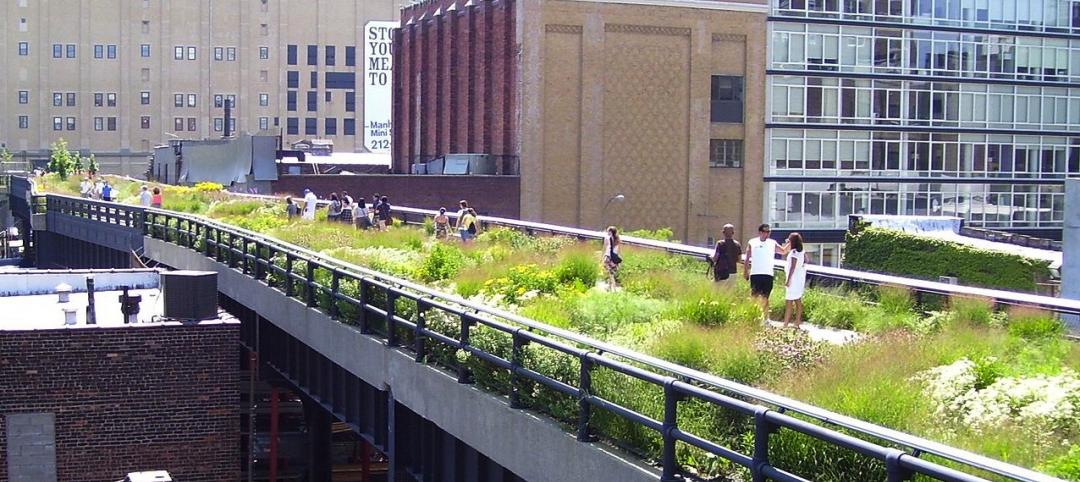 |
||||||||||||||
| The centerpiece of the $12.8 million renovation project is the conversion of the building’s dark, dank second-floor gymnasium into a light-filled fitness center. The 17,000-sf fitness center features all the amenities of a modern workout center—cardio machines, free-weight stations, circuit machines, dumbbells, a spinning room, and workout and classroom space—all situated snugly within the historic gymnasium. | ||||||||||||||
| At a time when institutions of higher learning are spending tens of millions of dollars erecting massive, cutting-edge recreation and fitness centers, Dartmouth College in Hanover, N.H., decided to take a more modest, historical approach. Instead of building an ultra-grand new facility, the university chose to
The centerpiece of the $12.8 million renovation project is the conversion of the building’s dark, dank second-floor gymnasium into a light-filled fitness center. Designed by Lavallee Brensinger Architects of Manchester, N.H., the 17,000-sf fitness center features all the amenities of a modern workout center—cardio machines, free-weight stations, circuit machines, dumbbells, a spinning room, and workout and classroom space—all situated snugly within the historic gymnasium. The gym’s 1970s-era suspended ceiling system was removed to reveal 10 steel trusses that now cap the space in dramatic fashion. During the day, natural light floods the interior through replacement clerestory windows that mimic the originals. At night, the interior lighting scheme highlights the massive trusses and emphasizes the vast volume of the space. To meet ADA accessibility standards, the Building Team created a new, universally accessible route to the front door that maintains the historic character of the entrance. A long, sweeping walkway designed at less than a 1:20 slope permits easy access to the building and is free of obtrusive railings. The original tri-part front steps were replaced with a wider, front-entrance staircase that can better handle crowds during periods of peak use. Inside, a new oversized elevator provides access to all public floors of the building. The elevator also serves as a key design element of the lobby and fitness center, with detailed enclosures at each level. The Reconstruction Awards judges praised Dartmouth for reviving the campus landmark and were especially pleased with the university’s decision to have the building live on as center for fitness and recreation. “There are so many facilities like this that have been converted for different use,” said Reconstruction Awards honorary chair Walker C. Johnson, FAIA, principal with Johnson Lasky Architects, Chicago. “I like the fact that they chose to update it for its original use.” |
||||||||||||||
Project Summary Alumni Gymnasium Renovation, Dartmouth College Hanover, N.H. Building Team Submitting firm: Lavallee Brensinger Architects (architect, interior architect) Associate architect: HOK Sport Structural engineer: McFarland Johnson Inc. Mechanical/electrical engineer: Hallam-ICS Construction manager: North Branch Construction General Information Size: 140,000 sf Construction cost: $12.8 million Delivery method: CM at risk |
Related Stories
Cultural Facilities | Mar 2, 2015
The High Line effect: Placemaking as an economic development engine
As big money and eager tourists flock to Chelsea, cities across the globe are starting to take notice. Chicago, Los Angeles, San Francisco, Seoul, Sydney, Toronto, and Washington, D.C., are among the metros currently planning High Line-inspired park projects.
Industrial Facilities | Feb 27, 2015
Massive windmill will double as mixed-use entertainment tower in Rotterdam
The 571-foot structure will house apartments, a hotel, restaurants, even a roller coaster.
Architects | Feb 27, 2015
5 finalists announced for 2015 Mies van der Rohe Award
Bjarke Ingels' Danish Maritime Museum and the Ravensburg Art Museum by Lederer Ragnarsdóttir Oei are among the five projects vying for the award.
Cultural Facilities | Feb 25, 2015
Bjarke Ingels designs geodesic dome for energy production, community use
A new building in Uppsala, Sweden, will serve as a power plant during the winter and a venue for shows, festivals, and music events during the warm months.
Cultural Facilities | Feb 25, 2015
Edmonton considering 'freezeway' to embrace winter
If the new Edmonton Freezeway is constructed, residents will have an 11-km course that winds through the city and allows them to skate to work, school, and other city activities.
Cultural Facilities | Feb 20, 2015
‘Floating’ park on New York’s Hudson River moves one step closer to reality
The developers envision the 2.4-acre space as a major performance arts venue.
Modular Building | Feb 12, 2015
New shipping container complex begins construction in Albuquerque
The Green Jeans Farmery already has a hydroponic farm component courtesy of owner and entrepreneur Roy Solomon.
Architects | Feb 11, 2015
Shortlist for 2015 Mies van der Rohe Award announced
Copenhagen, Berlin, and Rotterdam are the cities where most of the shortlisted works have been built.
Cultural Facilities | Feb 6, 2015
Architects look to ‘activate’ vacant block in San Diego with shipping container-based park
A team of alumni from the NewSchool of Architecture and Design in San Diego has taken over a 28,500-sf empty city block in that metro to create what they hope will be a revenue-generating urban park.
Cultural Facilities | Feb 6, 2015
Under the sea: Manmade island functions as artificial reef
The proposed island would allow visitors to view the enormous faux-reef and its accompanying marine life from the water’s surface to its depths, functioning as an educational center and marine life reserve.


















